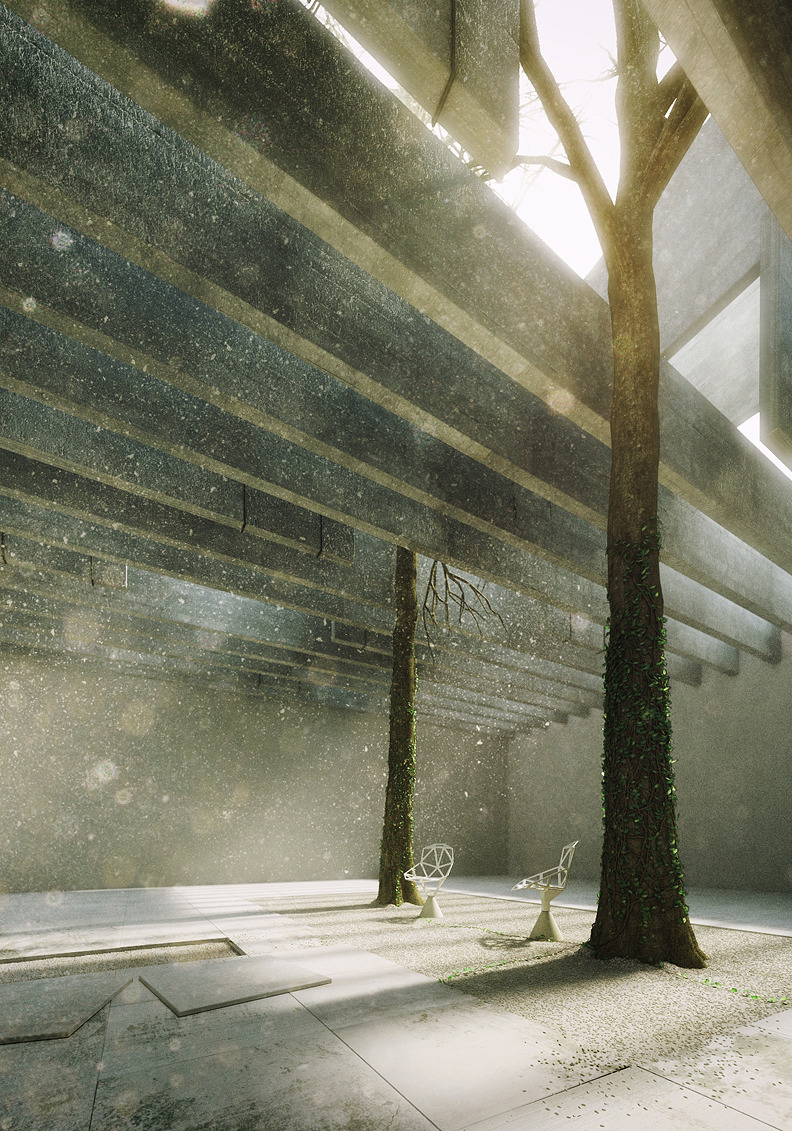
Sverre Fehn’s 1962 Nordic Pavilion at the Venice Biennale is a building that transfers Nordic light to Venice. It is a “light device” to sharpen the famous Venetian haze and modify its humid temperature, dematerialising as the Venetian light filters through the impossibly thin structural blades forming the pavilion ceiling.

There are no internal supports. The space is composed of thin concrete elements that span full length; massively deep beams over the doors, a grid of deep – but thin – blades over these, and a final grid of fine, thin, delicate blades forming the ceiling, which is immaterial. Translucent perspex is draped between these finer blades as a substitute for something more apparently substantial.

The logic of the stacked blades is broken in places; the grid of blades are cropped to allow trunks of trees to pass upward, bringing precariousness to the elevated matrix. Space is scale-less, ethereal and immaculate.

The pavilion plays with modernist purity, levitation, logic, order, and supposed legibility, and uses these as vehicles for something else; ultimately it dematerialises material and form in favour of atmosphere. The building takes modernist constants, such as materiality, mass and physical presence, to allude to architecture as an idea.
Simon Twose
The “My favourite modernist building …” series is in support of Gordon Wilson Flats which is facing threat of demolition.

Leave a Reply